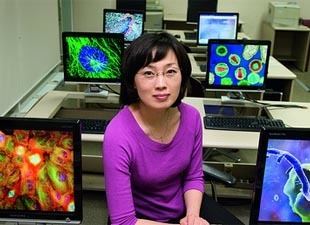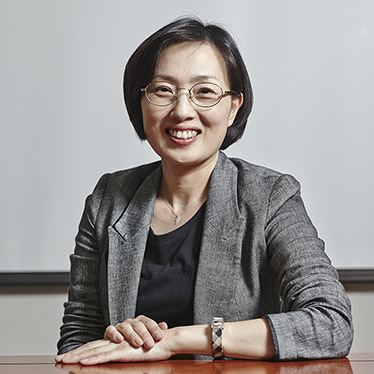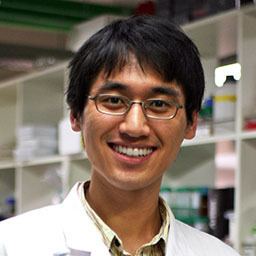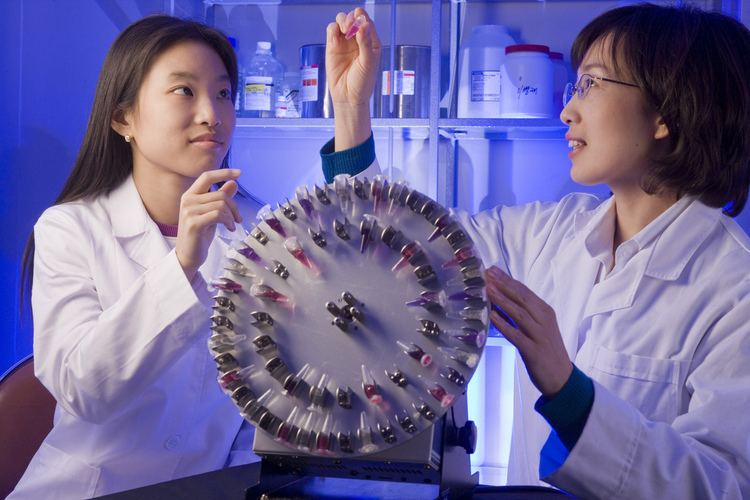Nationality South Korean Name V. Kim Alma mater Oxford University | ||
 | ||
Notable awards Ho-Am Prize in Medicine (2009)L'Oreal-UNESCO Women in Science Award (2008)Woman Scientist of the Year (2007)Thomson Scientific Citation Laureate Award (2007) Similar People Elizabeth Blackburn, Ada Yonath, Carol W Greider, William Lipscomb, Frederick Sanger | ||
Doctoral advisor Alan J. Kingsman Academic advisor Alan J. Kingsman | ||
V narry kim ibs and snu 1 in korean microrna biogenesis and regulation
Dr. V. Narry Kim is a South Korean biochemist and microbiologist, best known for her work on microRNA biogenesis. Her pioneering studies have laid the groundwork for the biology of microRNA and contributed to the improvement of RNA interference technologies.
Contents
- V narry kim ibs and snu 1 in korean microrna biogenesis and regulation
- V Narry Kim IBS and SNU 1 microRNA Biogenesis and Regulation
- Background
- Career
- Education
- Work summary
- Awards
- Publications
- References
V. Narry Kim (IBS and SNU) 1: microRNA Biogenesis and Regulation
Background

Dr. V Narry Kim was born in Seoul Korea in 1969. Kim first became interested in science as a high school student. When asked why she chose science as a lifelong career, she said, “I was charmed by the simplicity of the principles underlying the complexity of life.” Kim went on to purse a bachelor of science degree, then followed by a master of science degree in 1992 and 1994 respectively, both from Seoul National University (SNU). SNU is considered one of the top universities in Asia. After completing her masters, Kim went to the United Kingdom to further her studies at the University of Oxford. She graduated with a PhD in philosophy in 1998. Her academic journey then took her to the United States, where she took a position at the Howard Hughes Medical Institute at the University of Pennsylvania in Philadelphia as research assistant. Kim finished her postdoctoral studies and returned to Korea in 2001. She then started working at SNU as a research assistant professor. By the age of 35, Dr. Kim already had twenty-two of her papers published in well known and prestigious scientific publications such as Science and Nature. In addition, Kim “holds four patents based on her research activities, including one on a novel HIV-based gene delivery vector.”
Career

Dr. Kim received her doctoral degree from the University of Oxford where she studied the functions of retroviral proteins. After completing her postdoctoral research on mRNA surveillance in the laboratory of Gideon Dreyfuss at the University of Pennsylvania, she returned to Seoul National University in 2001 to set up her own lab.

Dr. Kim’s lab, funded by the Institute of Basic Science and Seoul National University, is focused on researches on RNA-mediated gene regulation. Specifically investigating post-transcriptional gene regulation mediated by microRNAs (miRNAs). The lab employs biochemistry, molecular biology, genetic, biophysical, and computational approaches. Research is focused on miRNAs, which are small non-coding RNAs involved in practically all working aspects of eukaryotic cells. Tight control of miRNA is vital to normal functioning cells. If dysregulated, miRNAs can often be linked to human diseases such as cancer. By focusing on the miRNA biogenesis, Dr. Kim’s lab has made major contributions to the understanding of miRNAs are created and processed in animal cells. These studies can potentially open the doors to new forms of cancer treatment and stem cell engineering.

In 2013, Dr. V. Narry KIM along with Professor Jin-Soo KIM of the SNU Department of Chemistry developed a new technology to eliminate specific microRNAs. This new technology has the promise of being potentially used to cure cancer and other illnesses in the future. In the research, TALENs (enzymes) were used to separate certain microRNA from a cell. TALENs had been used to create protein before, but this was the first time they have been used to separate microRNA. The team developed 540 different TALENs for this specific purpose. When this was applied to cancer cells, the proliferation rate of cancer cells dropped to one third of what it was. This discovery was published in the November 11, 2013 edition of Nature Structural and Molecular Biology.
Dr. Kim's first paper as PI was published in 2002 in the EMBO Journal. In this highly cited work, she defined two separate processing steps (primary microRNA (pri-miRNA) processing in the nucleus and pre-miRNA processing in the cytoplasm), and proposed a model of the microRNA biogenesis pathway for the first time. Based on this model, her research group discovered that most microRNA genes are transcribed by RNA polymerase II and that pri-miRNA processing is carried out by Drosha-DGCR8 complexes in the nucleus.
Her research group further identified uridylation-meditated pre-miRNA degradation pathway by LIN28 and TUT4, contributing to a better understanding of how microRNA-mediated gene expression regulation is involved in embryonic stem cell maintenance and cancer cell development. She also discovered the molecular basis for pri-miRNA recognition and cleavage by the Drosha-DGCR8 complexes, and pre-miRNA processing by Dicer. These findings suggested several critical points to be considered for designing more efficient short hairpin RNA (shRNA) vectors and also contributed to the improvement of RNA interference technologies.
In recognition of her contribution, Dr. V. Narry Kim received L'Oreal-UNESCO Award for Women in Science (2008), Ho-Am Prize in Medicine (2009) and The Korea S&T Award (2013). She is an active member of the RNA Society and the International Society of Stem Cell Research (ISSCR). In addition she has been recognized as one of the top Asian scientist to watch by Asian Scientist
Education
Work summary
Professional experience:
Professional service:
Awards
Publications
Publications (Most representative 10 items)
The Nuclear RNase III Drosha Initiates MicroRNA Processing. Nature 425:415-419.
Molecular Basis for Primary MicroRNA Processing by the Drosha-DGCR8 complex. Cell 125:887-901.
Lin28 mediates the terminal uridylation of let-7 precursor microRNA. Molecular Cell 32:276-284.
Conserved microRNA miR-8/miR-200 and its target USH/FOG2 control growth by regulating PI3K. Cell 139:1096-1108.
Dicer recognizes the 5’ end of RNA for efficient and accurate processing. Nature 475:201-205.
Monouridylation of pre-microRNA as a key step in the biogenesis of group II let-7 microRNAs. Cell 151: 521-532.
LIN28A is a suppressor of ER-associated translation in embryonic stem cells. Cell 151: 765-777.
Uridylation by TUT4 and TUT7 marks mRNA for degradation. Cell 159(6): 1365-1376.
Functional anatomy of the human Microprocessor. Cell 161(6): 1374-1387. (*co-corresponding authors)
Multiple repressive mechanisms in the hippocampus during memory formation. Science 350(6256): 82-87. (*co-corresponding authors)
